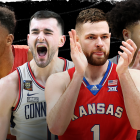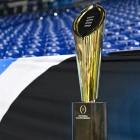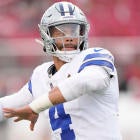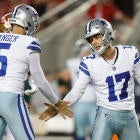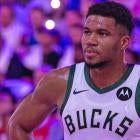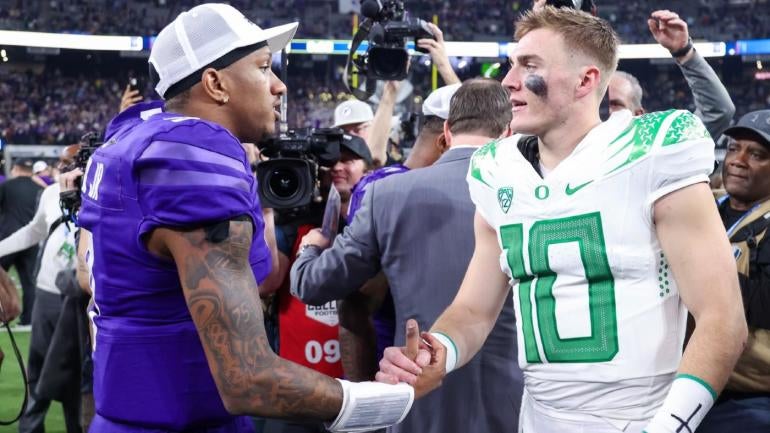
The concept of a "second-round" quarterback, based on how we discuss and talk through the position, is one of the most unique in "draft economics." If a team needs a quarterback and believes that quarterback can be their long-term starter, they should (and usually do) take that quarterback as early as possible in the first round.
And generally, if a team believes a quarterback is best suited to be a backup (and maybe has some traits/abilities to potentially develop into a starter), they should aim to draft them where they usually take "important" backups: Day 3 of the draft, or occasionally late in the third round.
So, based on how important the quarterback position is, the idea of a second- or third-round quarterback, conceptually, doesn't make a ton of sense. Over the last decade-plus, NFL teams have shifted their view on that very idea. And it could potentially have
real ramifications for players like Michael Penix Jr., Bo Nix, Spencer Rattler and more, much like it did for Desmond Ridder and Malik Willis just a few seasons ago.
A change in team drafting habits
Since the NFL rookie wage scale was put into place in 2011, teams no longer had to factor a player's rookie contract in their decision-making, or at least as much as they used to. In 2010, the first overall pick (Sam Bradford) made more than 14 times as much as the first pick of the second round. In 2011, it was a little over four times.
And since that time, the financial risk of early first-round picks went substantially down, and the value of trying to find a starting quarterback in round two or later went down with it.
Below is a historical graph of the ratio of second-round picks to first-round picks since 2011:
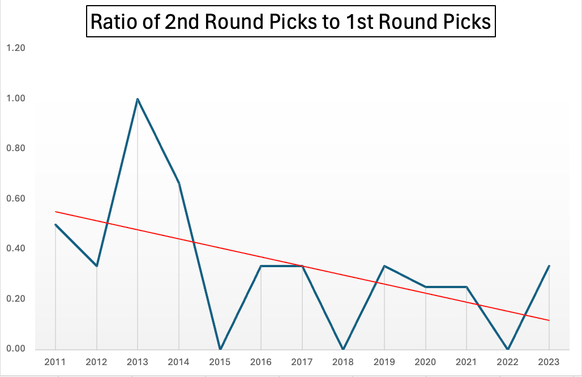
In 2011, 0.50 means 50% as many second-round QBs were drafted compared to first-round QBs. In 2013, 1.00 means the number of first and second round quarterbacks drafted were equal.
For one, only 12 quarterbacks have been drafted in the second round (on average one per year) since 2011. Additionally, of those one, five were taken in the first five picks of the second round, meaning they very easily could've been first-round picks. As you can see by the trend line from the data, we've seen a substantial and consistent drop in teams taking quarterbacks in the second round.
And while a handful picked after the first few picks of the second round have been successful (most notably Jalen Hurts and Jimmy Garoppolo), many were players who fit this conundrum well: If a quarterback has traits a team may like, but it doesn't feel convicted enough or trust him to be a franchise quarterback enough to take him in the first round, it's probably not wise to take that quarterback in the second round (i.e. Kyle Trask, Christian Hackenberg, DeShone Kizer and Brock Osweiler). And based on the data, teams appear to have collectively learned from those mistakes.
And in the third round, the average quarterback draft pick is pick 82, sliding somewhere in the back half of the round.
With the quarterback position, the draft valuation is different than a receiver or a lineman or a defensive back. It's a position that, if you draft in the top-100 picks, it can shape how your locker room views your team's outlook, both immediately and for the future. It's a position that, if it doesn't work out, you can't simply shift that player to more special teams or a different role. It's a position that, if you can't solve as a general manager, you won't hold that title very long.
And that's the biggest reason why, as teams continue to value analytic and new-age roster construction strategies, we've seen teams be more aggressive than ever to trade into the early first round for a quarterback, and shy away from the second- or third-round quarterback. Fortune favors the bold and, in the draft, the convicted, and teams no longer subscribe to the "we'll try to get one later" strategy at the most important position in sports.
For more draft coverage, you can hear in-depth analysis twice a week on "With the First Pick" -- our year-round NFL Draft podcast with NFL Draft analyst Ryan Wilson and former Vikings general manager Rick Spielman. You can find "With the First Pick" wherever you get your podcasts: Apple Podcasts, Spotify, YouTube, etc. Listen below!
What does this mean for the 2024 NFL Draft class?
Most mock drafters feel confident four quarterbacks fit that mold of "potential franchise quarterback," and that all four should go between picks 4-7 of the NFL draft: Caleb Williams, Jayden Daniels, Drake Maye and J.J. McCarthy.
After that, there are questions abound about how teams value Washington's Michael Penix Jr., Oregon's Bo Nix, South Carolina's Spencer Rattler, and others. As of now, there are five teams whose roster construction very likely sets them up to draft a quarterback in the first few rounds: Chicago, Washington, New England, Minnesota and Denver.
There's also teams, such as Raiders, Rams, Giants, Jets and Falcons, who may consider one in the first three or four rounds. But each of those five teams have either two quarterbacks with a contract/credentials to be challenging for a starting job, and/or an unquestioned starter for this season and beyond.
Teams set up to select QB
| Team (draft position) | Current QB1 | Current QB2 |
|---|---|---|
Bears (No. 1) | ||
Commanders (No. 2) | Jeff Driskell | |
Patriots (No. 3) | ||
Vikings (No. 11) | ||
Broncos (No. 12) | ||
Jets (No. 10) | ||
Falcons (No. 8) |
Teams who could consider picking QB
| Team (draft position) | Current QB1 | Current QB2 |
|---|---|---|
Raiders (No. 13) | ||
Rams (No. 19) | Jimmy Garoppolo | |
Giants (No. 6) | ||
Jets (No. 10) | ||
Falcons (No. 8) |
Of the five teams likely to draft a quarterback early, four of them will likely snag them in the first few picks of the draft. Leaving just one team, most likely one of the Patriots, Broncos or Vikings, the only one left out of getting one of the expected top-four quarterbacks. These teams are far more likely to consider a quarterback in the late third or four round rather than use a premium pick on a player who will likely be their third-stringer as a rookie, barring they value the quarterback so highly they "can't believe" he's there in the second round.
That's not to say this next "tier" of quarterbacks don't have NFL starter traits. Penix's ball placement across the field is special. Nix's experience and perimeter accuracy is hard to ignore. Rattler's arm talent and fluidity gives him one of the more exciting upsides of any in this class.
But based on this data and current NFL quarterback rooms, history says we maybe should expect, after the expected four early picked quarterbacks, maybe as few as one quarterback between picks 33 and 80, and then the rest following. That could mean, for example, Penix slides into the second or even early third round, and Nix and Rattler slip to the late third or even fourth round.
We talk about the quarterback position so much, and it's no surprise that these players, especially ones that show starter traits, tend to "rise" in the discussion around the draft. But in the end, they play a position that, unless teams feel you're a potential franchise quarterback, you're likely relegated to a backup role and, therefore, a position in the draft where backups get drafted.
And for a few of the favorites among those in the media covering the NFL Draft, that could lead to at least one surprising quarterback name slipping in the draft into Friday and/or Saturday of draft weekend.
The 2024 NFL Draft will take place from April 25-27 in Detroit. More draft coverage can be found at CBSSports.com, including the weekly updated draft order, mock drafts and a regularly available look at the eligible prospects.








